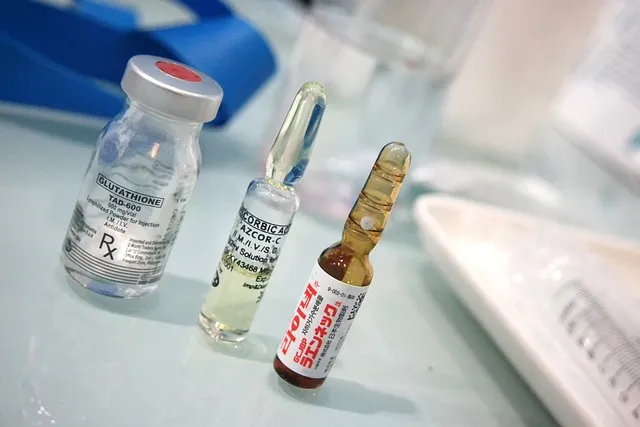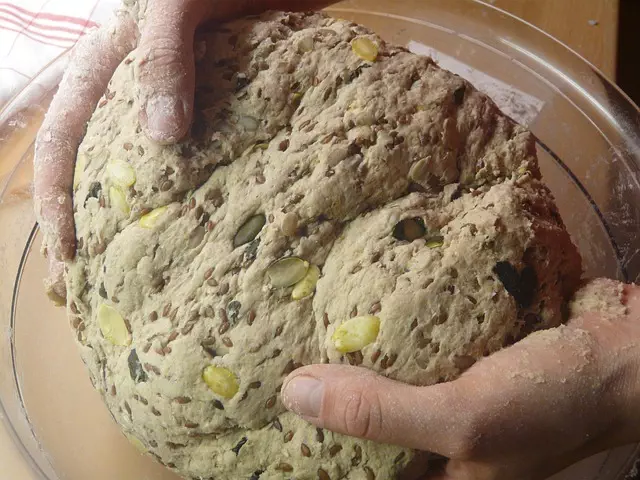Semaglutide, an injectable synthetic hormone mimic, is a versatile medication for diabetes management and weight loss. Proper storage (2°C-8°C) and handling are crucial to maintain its potency and safety. Key practices include keeping vials sealed, avoiding moisture, inspecting solutions before use, wearing sterile gloves, and proper disposal of used needles and containers. Alternative delivery methods like oral, transdermal, or nasal formulations are being explored for enhanced patient convenience. Correct storage ensures each dose delivers the intended therapeutic effect, reduces wastage, and promotes cost-effectiveness during semaglutide therapy.
“Discover the optimal way to manage your semaglutide injections with our comprehensive guide. This article delves into the unique properties of the semaglutide injectable form, highlighting its benefits in managing various health conditions. We provide essential insights on proper storage, handling techniques for safety and hygiene, and common mistakes to avoid.
Learn how to maximize the effectiveness of your treatment while ensuring needle safety and exploring alternative delivery methods. By following our expert tips, you can streamline your semaglutide therapy experience.”
Understanding Semaglutide Injectable Form: What It Is and Its Benefits

Semaglutide is a medication available in an injectable form, offering a convenient and effective treatment option for various health conditions. This semaglutide injectable form is a synthetic version of a hormone found naturally in our bodies, mimicking its actions to produce significant therapeutic effects. It’s primarily known for its role in diabetes management, where it aids in blood sugar control.
The benefits of the semaglutide injectable form extend beyond diabetes. Studies show that it can promote weight loss and reduce the risk of cardiovascular events in certain patients. This versatility makes it a valuable tool for healthcare professionals, providing a more holistic approach to patient care. Additionally, its once-weekly administration schedule offers patients added convenience compared to daily injections.
Storing Your Semaglutide Injections Properly

Storing your semaglutide injections properly is crucial for maintaining their effectiveness and safety. Keep them in a cool, dry place, away from direct sunlight and heat sources. The ideal storage temperature ranges between 2°C and 8°C (35°F to 46°F). Always use the provided storage container, which is designed to protect the semaglutide injectable form from degradation. Avoid freezing the injections, as this can alter their composition.
When not in use, keep the vials or pre-filled syringes sealed with the cap tightly attached. Do not expose them to moisture or high humidity levels. It’s important to store semaglutide injections out of reach of children and pets. Additionally, ensure that you dispose of expired or unused vials according to local regulations to prevent misuse or accidental ingestion.
Handling Semaglutide Injections: Tips for Safety and Hygiene

When handling Semaglutide injections, safety and hygiene are paramount to prevent contamination and ensure efficacy. Always store the semaglutide injectable form in a cool, dry place, away from direct sunlight. Keep it in its original container to maintain stability and prevent exposure to moisture or air. Before each use, inspect the solution for any visible signs of degradation or changes in color. Discard any vials that appear cloudy or have particles suspended in the liquid.
For safety, wear sterile gloves when preparing or administering the injection. Wash your hands thoroughly before and after handling the medication. Avoid touching the tip of the vial or the injection site to prevent introducing contaminants. Dispose of used needles and syringes properly, following local guidelines for sharps waste disposal.
Common Storage Mistakes to Avoid

When storing your semaglutide injectable form, it’s crucial to avoid common mistakes that can compromise its effectiveness. One major error is keeping it in places with extreme temperatures—either too hot or too cold. Always store your medication in a cool, dry place, away from direct sunlight and heat sources. Refrigeration is generally recommended for most injectables, but ensure the temperature stays between 2°C and 8°C (35.6°F to 46.4°F) to maintain optimal potency.
Another mistake to steer clear of is exposing your semaglutide supplies to moisture or humidity. Keep them in their original packaging until use, and never leave open vials or pens out in the open. Proper storage conditions help prevent degradation and ensure each injection maintains its intended strength and consistency, providing you with the best possible treatment results.
When and How to Discard Used Semaglutide Needles

After each semaglutide injection, it’s crucial to properly dispose of used needles to ensure safety and prevent environmental contamination. Discarding used needles should be done promptly after their use, ideally immediately following the injection. Place the needle in a hard, leak-proof container designed specifically for sharps waste, which can typically be found at pharmacies or healthcare facilities. Never throw away used needles in regular trash or recycling bins to avoid injury and potential exposure to others.
When discarding semaglutide injectable form containers, make sure they are empty, with no residual medication left inside. Follow local regulations for hazardous waste disposal, as guidelines may vary depending on your location. Some areas require you to seal the container tightly before dropping it off at designated collection points or medical waste facilities. Properly disposing of used semaglutide needles and containers is an essential step in maintaining a safe environment and preventing any potential health risks associated with these sharps.
Alternatives to Semaglutide Injectable Form: Exploring Other Delivery Methods

The current standard for administering semaglutide, a medication used in diabetes management and weight loss treatments, is through injections. However, there’s growing interest in exploring alternative delivery methods to enhance patient convenience and adherence. One such option gaining traction is the non-injectable form of semaglutide, which could significantly alter how this therapeutic agent is delivered.
Research into oral, transdermal, or even nasal formulations of semaglutide is underway, aiming to provide a more user-friendly experience compared to traditional injections. These alternative delivery systems offer potential benefits such as improved patient compliance and reduced anxiety associated with needles. While these methods are still in various stages of development, they represent promising avenues for the future of semaglutide administration, especially catering to patients who prefer less invasive treatment options.
Conclusion: Optimizing Your Semaglutide Therapy Experience

Properly storing and handling semaglutide injections is paramount to ensure optimal efficacy and patient comfort. When keeping your semaglutide injectable form, remember that it’s sensitive to light, moisture, and heat. Store it in a cool, dry place away from direct sunlight, and always keep it in the provided packaging to protect it from environmental factors.
By following these simple guidelines, you can enhance the overall experience of your semaglutide therapy. Consistent storage conditions help maintain the medication’s stability, ensuring each dose provides the intended therapeutic effect. Moreover, proper handling practices contribute to reducing wastage and promoting cost-effectiveness.



